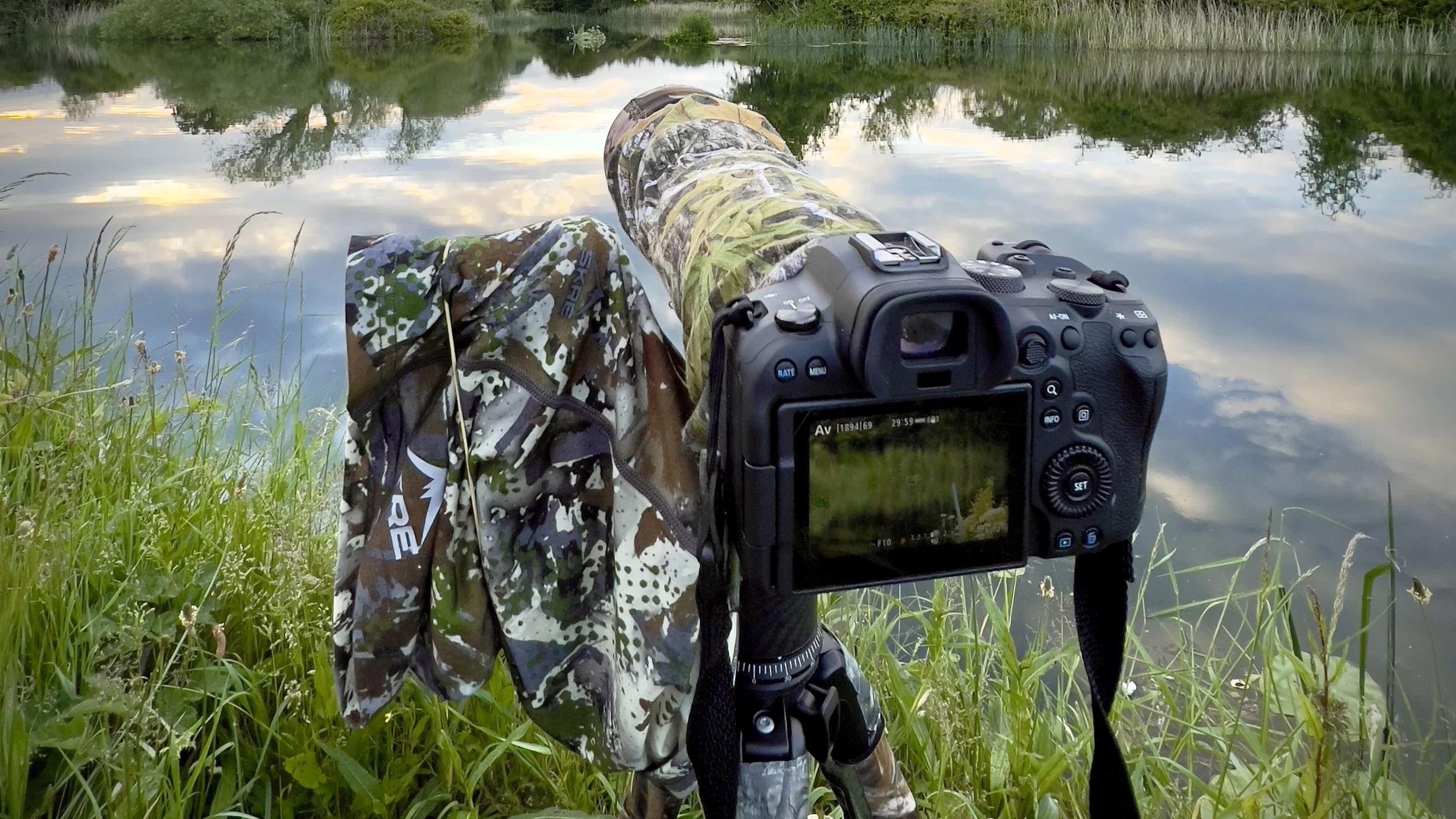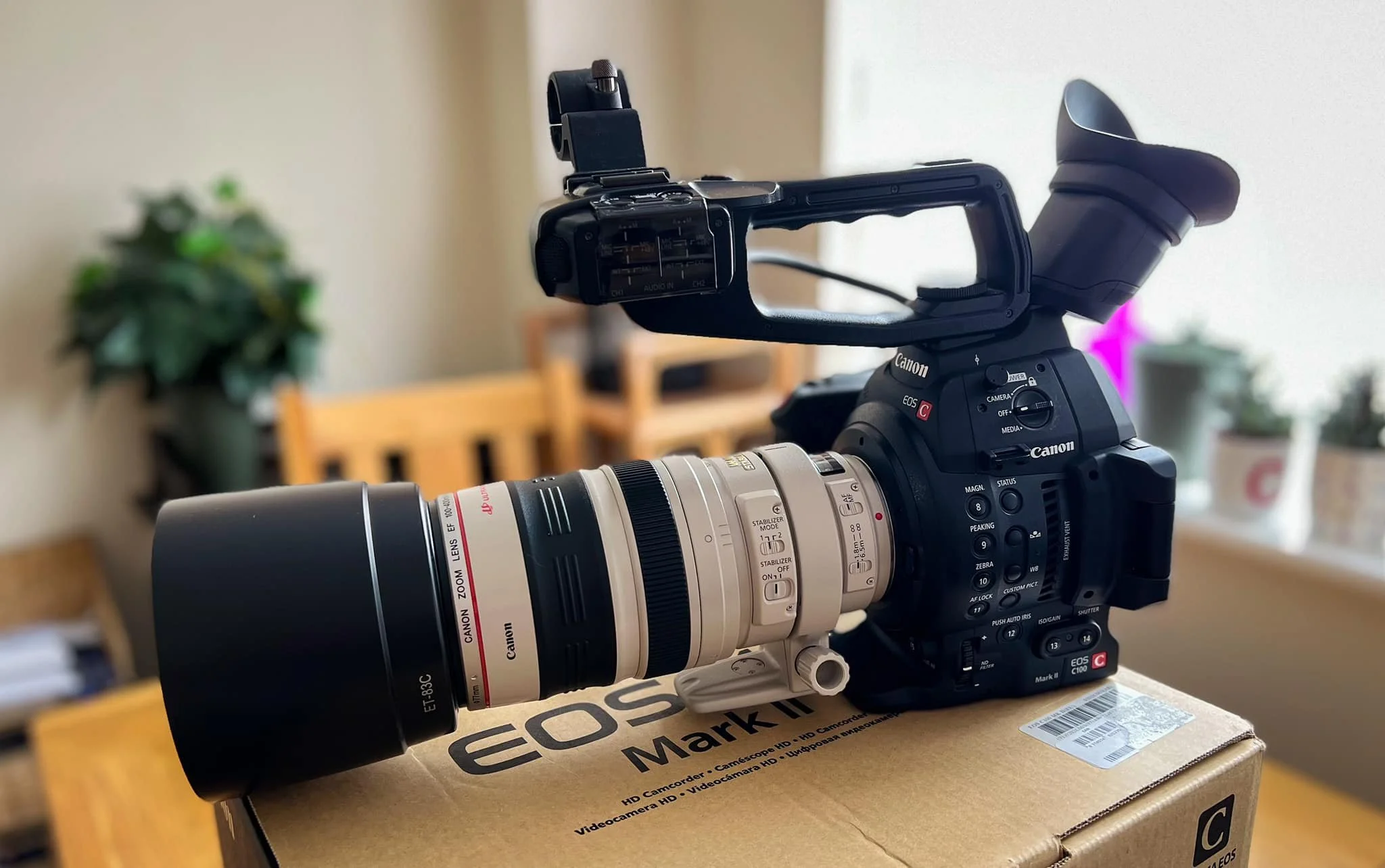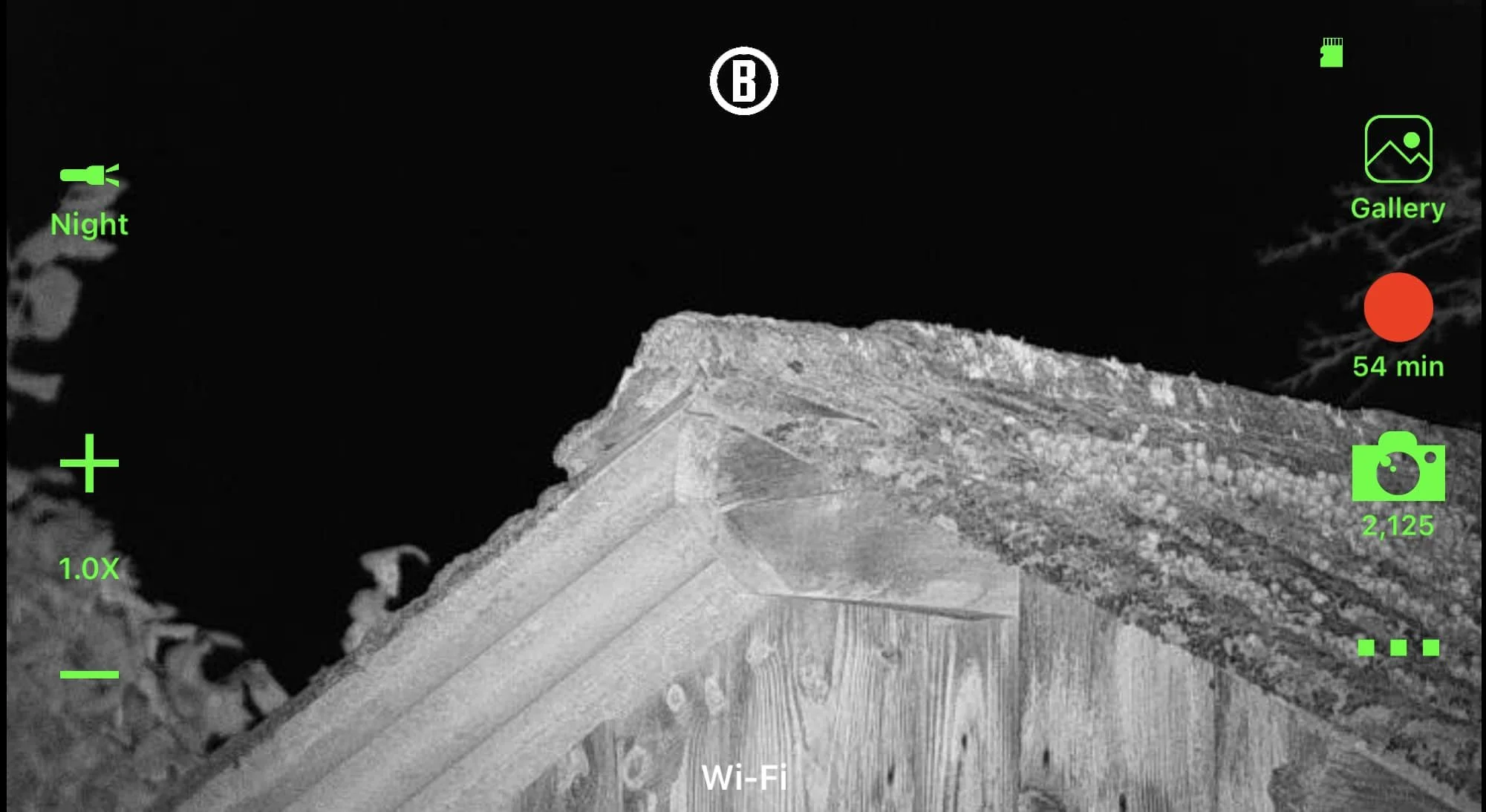In The Bag
As someone who spent 30 years working in the electronics industry before becoming a Professional Wildlife Photographer, it should be no surprise that I am a bit of a geek and like playing with new tech. Like many photographers I have an ongoing internal battle between wanting to get ultra comfortable with the kit I use (so I can use it almost without thinking) and a desire to try out the latest lens or camera in the hope it will get me an award winning shot, or at least improve my keep rate!
With this in mind, about 12 months ago I took a long hard look at what kit I really wanted to use as a pro (and could afford), and set upon the following kit list, which I now use:
A fast body that can operate at relatively low ISO, with a good number of focus points. As a lifelong Canon user I switched to the Canon R6 mirrorless back in May 2022, and have not been disappointed. Its ability to shoot at 20 frames per second, with eye and object tracking focus, and image stabilization makes this a great body for Wildlife photography. My old Canon 80D is used as a back up (which runs a lot slower) however it will do what I need if I get an issue with my R6 whilst in the field. I also use my 80D in my wireless DSLR camera trap set up (see below). For video I have a Sony ZV-1 for talking head recordings and slo-mo, I use a DJI Pocket 2 for timelapse and B roll, and a Canon C100MKii for most Wildlife film making. The C100MKii may seem an odd choice given that it has been superseded by newer models, and frankly is only 8.3MP. However, with reasonable face detection auto focus, low light capability down to 102,400 ISO, AVCHD/MP4 recording up to 1080P/60FPS, a wide dynamic range, built in ND filters, Dolby AC3 audio recording via two XLRs or stereo microphone, and full compatibility with all my EF fit lens, its a real workhorse.
The Canon R6 is a very quick camera, and the ability to map buttons for things like back button focussing is a real bonus for a Wildlife Photographer.
Lenses: A telephoto with a min length of 500mm, a mid-range zoom, plus a lightweight wide angle that offers 10mm. The Tamron 150-600 F5-6.3 DI VC G2 is on my R6 most the time and what I shoot a lot of my wildlife photographs with. It’s a little heavy but I can shoot at around 500mm or 525mm and its sharp, so no need for teleconverters in most cases. I would love to have a 500mm or 600mm F4 Canon prime but for now I have to get my monies worth out of the Tamron zoom: its a big step up to the next level of lens as they are about £10K when new! For mid-range distances I use a Canon 100-400mm 4.5-6 IS L, which spends most of its time connected to my C100MKii and is used for filming wildlife. On the wide angle end of things I use a Canon EFS 10-18mm IS lens. Its good for capturing environmental shots and can be used to focus close up (something like 25cm) which is a bonus. Macro is definitely an area that I need to invest in as none of my lens do a truly adequate job. I also have a bunch of smaller primes, low cost zooms and other bits and pieces I have collected over the years that to be honest rarely get used. The Tamron super zoom and Canon 100-400 L glass certainly do the majority of the work for me.
The Canon 100-400 L glass is a great mid-sized zoom, that works really well with the Canon C100mkii despite the camera’s age.
Drones: These days its very common to see drone shots in wildlife documentaries, in fact its almost become expected. I have to say quite often what’s used for these shots is not a drone, but often a big pole with a 4K action cam attached :-) When I want aerial footage I use a DJI Phantom 3. Like a lot of my kit it isn’t the smallest or lighest, but I don’t use it often enough to warrant spending money on a more portable model, and most the time my 4x4 is close at hand if I need to carry the extra weight.
Optics: Binoculars and scopes for me are as important as the camera body and lens you are using, as without them you can’t find or study your subject. I typically use 8x42 and 8x32 depending on what I’m viewing and the amount of light available. I have several pairs of binoculars, but my Bushnell and Hawke ones seem to get the most use as they are comfortable and clear. Night vision is an area that I believe can really help extend a Wildlife Photographers knowledge as getting to watch your subject and understand its behaviour both day an night can be invaluable. I currently have a 6x50 Bushnell Equinox Z2 night vision scope, but due to its terrible battery life, and the fact it is infrared and not thermal, means it doesn’t get used as often as I hoped it would. The next step up is to move to a thermal scope, as I have read and seen good things about their use both in day and night to help find well hidden animals.
I like the idea of watching (and ideally filming) wildlife in complete darkness, although the Bushnell Equinox Z2 IR spotting scope has not met my needs.
Trigger cameras and DSLR Camera traps: I have half a dozen trigger or trail cameras situated around my property in France that are used to monitor the Pine marten and European Wildcat we have visiting. I also have another couple that I use in the UK for Otter projects. All have come from Amazon, and all are relatively low cost, Chinese manufactured units which I have purchased when they are on special. Currently my favoured ones are GardePro E8 which I like as the footage is clear, the trigger time pretty good and they can be viewed remotely using a combination of Bluetooth and WiFi. I have recently purchased a professional grade DSLR Camera Trap system from Camtraptions, which consists of a waterproof housing for your DSLR, a PIR sensor to trigger the camera, and a couple of wirelessly triggered flash units (which means you can shoot 24 hours a day). Its early days, however my first trials using these have been good enough to warrant spending more time perfecting the set up, and building a pair of custom waterproof housings for the flash units. This year the system will be deployed to capture still images of European Wildcat in France.
The Camtraptions system……having one of my cameras clicking away taking high quality wildlife photographs whilst I am off working on other projects is a real bonus!
Camouflage: Given that I don’t own a 600mm F4 lens I mainly rely on fieldcraft and camouflage to get myself as close to the subject as possible (without causing distress). This can sometimes be as simple as following tracks, finding the animal, and shooting, but equally can be a little more considered, positioning myself close to where they are likely to pass or hunt. In both cases, you need a combination of good field skills and excellent camouflage to get close and I have a variety of hunting clothes in different tones and weights (to suit different seasons and environments) from Kuiu, Kryptek and Nomad, as well as camera lens and tripod camouflage from Concamo. Concamo’s sniper veil makes an excellent tripod cover and is much cheaper than their tripod leg wraps. I also use a standard dome hide from Wildlife Watching Supplies and a Tragopan Hokki V3 hide for when I want ground level shooting or filming. The Tragopan pop-up mechanism for quick deployment of their hides is great, and the colour scheme of the hide is very well suited to Northern European Woodlands. For shooting in grassland, the addition of Tragopan Ghillie blanket helps the hide to blend perfectly, particularly once you add some natural vegetation.
Concamo Green (used here to cover the camera and lens) is a great colour and spatial match to most Northern European environments.
Software that helps me have more keepers: It may seem odd to add software to my kit list, however we have to recognise that most images produced today have some form of editing, and a good piece of software carefully used has saved many a badly lit or poorly focussed photograph. I pretty much exclusively use Topaz’s suite of AI products for all my denoise and sharpening needs, with all of my images being edited in Adobe Lightroom or Photoshop, depending on what manipulation is needed. Video is largely edited and colour graded in Lumafusion, and CapCut is used for quick montages & short reels for social media use.
A rucksack that has room for my camera kit, and spare room so I can take some comfort items like a sit mat and flask: Like most photographers I am still searching for the perfect backpack as all too often a photographic rucksack does not have enough room for the other stuff I like to take with me such as food, a flask, my notebook, a sit mat Etc. So, depending on what I need to take with me, I either use my big F-Stop Tipola 50L, my medium sized LowePro AW 300 or more often than not my Fjallraven Singi 28L rucksack. If I want to be very mobile I use the Fallraven Greenland Shoulder bag, which is superb if just need something small to carry my accessories, such as batteries and memory, maybe a pair of binos and a phone.
Becuase you can add and remove additional pouches to the FJallraven Singi backpack you can customise it depending on exactly you want to carry with you.
So, this isn’t an exhaustive list of what I use and there are many other items such as supports (tripods, monos and beanbags), LED lights and flash units, as well as wireless back up drives and chargers that I use almost every day, but the kit list above is the stuff I would have to replace immediately if I dropped it in the canal or down a ravine!
Next month in the “In the Bag” series, we will look at 5 accessories you can buy for under £25 that I believe every Wildlife Photographer should have in their kit.







